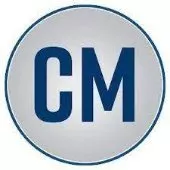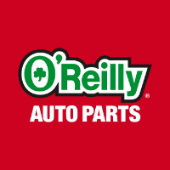-
Welcome to Auto Parts Forum
Whether you are a veteran automotive parts guru or just someone looking for some quick auto parts advice, register today and start a new topic in our forum. Registration is free and you can even sign up with social network platforms such as Facebook, X, and LinkedIn.
GearWrench Combination Ratcheting Wrenches $34.99!
-
Similar Topics
-
By Counterman
The popularity of turbocharged gasoline engines has surged over the past 20 years. According to the Department of Energy, approximately 1% of all 2000-model-year light-duty vehicles were turbocharged. Fast-forward to today, and more than one-third of all light-duty vehicles are turbocharged.
So, why the rapid change? That’s simple: fuel-economy standards. Current CAFE standards call for automakers to increase the average fuel economy of their lineups to 54.5 mpg by 2025. To meet these regulations, automakers have needed to innovate. This innovation has led to the advent of new technologies that have changed the entire industry.
Today, automakers are building vehicles that are safer than ever before, with more creature comforts. They’re more powerful despite the fact that the engines are smaller in displacement – yet the average customer doesn’t realize that anything has changed. Two of the key technologies that have helped to boost fuel economy and horsepower with less displacement are gasoline direct injection and turbocharging.
Direct Injection
These systems are able to measure and control the amount of fuel entering the combustion chamber more accurately, boosting fuel economy and maximizing power output.
The low-pressure fuel pump is mounted inside the fuel tank, and it sends fuel through the fuel lines and up to the high-pressure fuel pump. This pump is mounted on the engine and is driven by a special lobe on the camshaft. The fuel pressure then is increased to extremely high pressures; some applications may see 3,000 to 5,000 psi. The fuel then travels to the injectors that are mounted inside the cylinder head and injected directly into the combustion chamber.
Why does the fuel pressure need to be so high? Port fuel injectors spray fuel in a vacuum, and that vacuum draws the fuel vapors into the combustion chamber. Direct injectors need to be able to overcome the higher pressures seen inside the combustion chamber, so the fuel pressure needs to be much higher compared to port injection. The increased fuel pressure has another benefit: The fuel is able atomize much better compared to port fuel injection. The more atomized the fuel is, the better it burns, and the engine can run much more efficiently.
Turbocharging
Turbocharging allows automakers to build engines that produce more power with less displacement, and sometimes with fewer cylinders.
How does a turbocharger work? Let’s talk about it in simple terms. Gasoline engines burn a mixture of air and fuel. The engine can only draw in a fixed amount of air on its own, so the ECU controls the amount of fuel added to the combustion chamber to maintain the optimum air and fuel mixture. Turbochargers increase the air flow into the engine. This means that more fuel can be added, and the engine can make more power.
Inside the turbocharger you’ll see a shaft with a turbine wheel on one end, and a compressor wheel on the other. The turbine is driven by exhaust gasses leaving the engine. This spins the compressor wheel that forces more air into the intake manifold. This increased air flow and pressure is known as boost, or charge air. The charge air typically passes through an intercooler or heat exchanger; this removes some of the heat and makes the air denser. The air then travels to the combustion chamber.
A Winning Combination
GDI and turbocharging each have their advantages, but when combined, they offer even more. In many late-model vehicles, lower-displacement engines with GDI are able to produce 20% more power with 20% less displacement when compared to bigger engines from a decade ago.
Everywhere you look, it seems that engines have gotten smaller in displacement. Ford has its EcoBoost four-cylinder and V-6 engines, Nissan/Infiniti has its 3-liter VR engines and Chevrolet recently started offering a 2.7-liter turbo in the Silverado. Ford and Chevy also offer three-cylinder turbo engines in some of their smaller offerings. These smaller-displacement engines offer better fuel economy than the engines they’re replacing, but without turbocharging they wouldn’t be able to offer the same sort of power.
This is where smarter boost comes into play. Smaller-displacement engines can use smaller turbos to fill in gaps in the powerband. Smaller turbos are able to spool up faster, leading to better response and more predictable power delivery. Modern turbos are mounted closer to the engine than ever before. This means the exhaust gasses don’t have to travel as far once they leave the combustion chamber, and the turbo can spool up faster.
Add-On Sales Opportunities
As parts professionals, it’s our job to know how these systems work, and what our customers need to know whenever they’re replacing components in the system. Here are a few tips and tricks to be aware of next time you’re selling GDI or turbocharger parts.
The fuel system needs to be depressurized before starting a repair. There are a number of ways this can be achieved. Your customers could remove the relay for the supply pump inside the fuel tank and crank the engine. With no supply of fuel, the HPFP won’t have anything to pressurize. However, a better alternative is to use a scan tool to depressurize the system. This method typically redirects the fuel back to the fuel tank, so it won’t put any strain on the system. They can confirm that the fuel system has been depressurized by checking the reading from the fuel-pressure sensor.
Your customers should pay close attention to the seals on the injectors. In most applications, the seal ring that seals the injector to the combustion chamber cannot be reused. These seals often are made of materials such as Teflon and will require special tools to install them. The seal needs to be carefully and uniformly stretched as it slides into position. Then it’s resized to fit into the groove on the end of the injector. It’s best to check the OE service information whenever servicing the injectors.
The high-pressure fuel line is another component that may not be reusable during service. In many applications, the fittings on the ends of the line will have a sealant applied inside the threads, or the fitting may stretch or crush during install to form a tight seal. You also might see a yellow tag or sticker on the fuel line that says, “HIGH-PRESSURE FUEL LINE, DO NOT REUSE,” or something similar.
During turbocharger service, it’s important to avoid some of the most common installation errors. An example would be failing to properly clean gasket surfaces, neglecting to replace gaskets during service or failing to clear out debris from a previous failure. A restricted or blocked oil-supply line can quickly lead to oil starvation and turbocharger failure. Your customers always should clean the area where the engine-oil supply and return lines connect to the engine crankcase, being sure to prevent any debris from entering the engine oil or crankcase. Oil contamination can lead to additional engine damage. Always remove and inspect the engine-oil supply and return lines for blockage or restriction, or replace them entirely. Finally, always replace the crush seals on banjo-bolt connections.
The post
link hidden, please login to view appeared first on link hidden, please login to view.
link hidden, please login to view -
-
By OReilly Auto Parts
View this video featuring the BWD S14226 - Switch product and shop other similar products on OReilly Auto Parts. - Products ...




Recommended Posts
Join the conversation
You can post now and register later. If you have an account, sign in now to post with your account.
Note: Your post will require moderator approval before it will be visible.